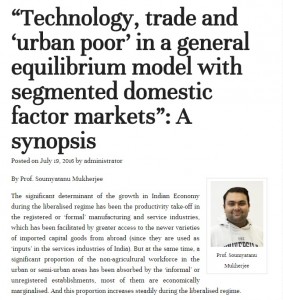TRANSFORMATIONAL CHANGE REDUX: OLD WINE IN A USED BOTTLE?
Like the proverbial phoenix, the topic of transformational change rises every so often in the practitioner literature. In a recent article in McKinsey Quarterly (October 2014), Hamel and Zanini argue that ‘continuous improvement requires the creation of change platforms rather than change programs ordained and implemented from the top’ (italics added). Noting that transformational change programs have had a ‘dismal track record’, the authors stress the need for a ‘socially constructed approach to change’ in which the leader’s job is to ‘build a change platform’ that allows anyone to initiate change, launch experiments, and suggest solutions (italics added). The authors’ case for an inclusivist approach to transformational change contrasts with the traditional view of change as a top-down, engineered, managed and controlled process. To construct such a platform, the authors recommend shifting the approach: 1) From top-down to activist-out – syndicating the responsibility of change across the organization, 2) From sold to invited – obtaining an all around commitment, and 3) From managed to organic – where change in external environment is met with constant experimentation and a flux of new ideas. Under the suggested approach, the leader’s role changes from designing and managing the change to creating a collaborative platform. The prescription for social construction, experimentation and broad collaboration represents yet another twist in the continuing debate. But does this constitute an advance in how we understand transformational change or how it is to be obtained?
The notion of transformational change has always captivated the imagination of a section of scholars and business managers alike. A common undercurrent appears to run through Schumpeter’s ‘creative destruction’, Lewin’s Unfreeze-Change-Refreeze, and Michael Hammer’s long campaign for BPR. Similarly, the Management Discussion sections of many annual reports of companies carry the narratives of non-linear growth, break-through change, disruptive innovation, restructuring for quantum leaps, etc. It seems that this yearning for big change comes from a general distrust of incremental, statist approaches. It also seems that a philosophical adherence to the ‘break-and-make’ is de rigueur for those higher up in the pecking order – whether in academics or in industry. And as can be expected, most prescriptions for the change involve different mixes of people-centered approaches such as the role of the CEO, process-centered approaches such as Lewin’s Unfreeze-Change-Refreeze, or structure-centered approaches such as General Electric’s de-layering. Evidently, romantic underpinnings of transformational change are undeniable, as it conjures up images of ‘gold-rush’ type of adventure, guts, and gumption, qualities that we much admire.
But after we have finished romancing the idea, we must consider some nagging questions. This is not to argue that the whole notion is just so much poppycock. Indeed, some of the greatest advances have been transformational. Whether such changes can be commandeered, and under the specific prescriptions is the question. A few common features of transformational change must be noted. First, all such changes are presumed to be ‘good’, like a tonic with no adverse side effects, or whose benefits far outweigh such side effects. Second, the enthusiastic chorus for transformational change somehow sings to its universal adoption. Third, many such prescriptions are founded on a few case studies with non-trivial context limitations. Constructing a science out of the notion is where the trouble starts. Transformational change is anything but cheap. Many corporations have played with it and paid a heavy cost.
Perhaps in our enchantment with science, we forget three basic truths. First, all change is discontinuous, so the points of singularity obey no laws. Second, a large part of transformational change arises from technological break-through which is notoriously hard to systematize. Third, big transformational change e.g. fall of Berlin wall, can involve collectivization of intense human emotion. None of these are well understood. As would be expected, the prescriptions for transformational change carry little advice on any of these. Given that such a change usually comes with substantial downsides and costs, it cannot be for everyone. Who should adopt it and who should not?
Until questions of this nature are answered, any prescription for transformational change is likely to remain just doctrinal, much like a gold-rush dream.
Milind Padalkar is an FPM student at Indian Institute of Management Kozhikode

















 Users Today : 342
Users Today : 342 Users Yesterday : 552
Users Yesterday : 552 This Month : 8238
This Month : 8238 This Year : 72482
This Year : 72482 Total Users : 496470
Total Users : 496470 Who's Online : 1
Who's Online : 1